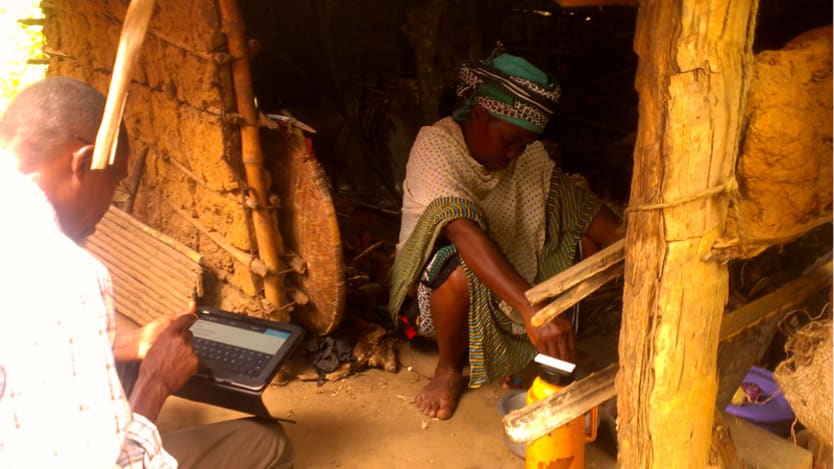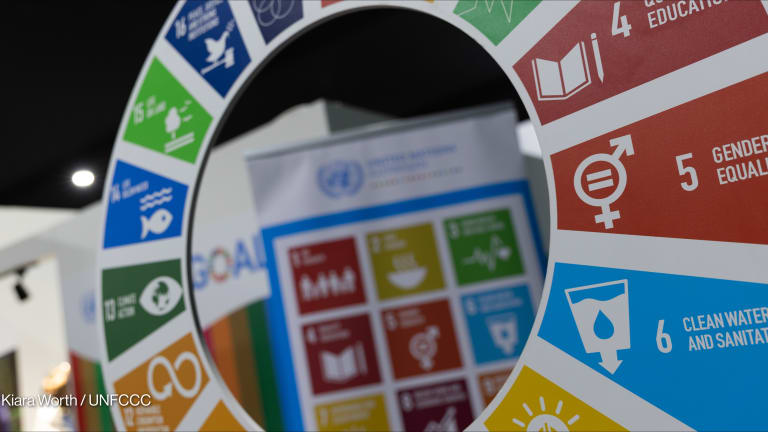
When world leaders at a United Nations conference agreed last month in Addis Ababa on how to finance international development over the next 15 years, the news made scant headlines.
Fundamental questions remain regarding how the international community will achieve the new sustainable development goals, which will be formally adopted by the United Nations in September. And an even more crucial part of international development has been left unexplored: how to improve the efficiency and impact of the money spent on projects on the ground.
New technology can help increase efficiency as we move toward the SDGs, but only if the development sector is willing to embrace some fundamental reforms to the long-standing structure and approaches that have evolved during the last 60 years, largely during a nondigital era. To help put this change in technologies into perspective, imagine you live on a mountain slope. You’ve lived there all your life and over the years, you have perfected the art of getting down that slope on your feet, quickly and without falling.
Then, one day someone in your village returns from a trip abroad and brings back a gadget no one in your village has ever seen: a pair of skis. Your village is really excited about this new tool, but upon trying it, you trip, fall and break your legs. It’s true you are not used to it, but there is a more fundamental problem: The slope is covered with grass, not snow.
The world of international development faces a similar dilemma today. We are bringing new technologies to the field and while people are eager to learn how to use them, there are bigger challenges than just understanding operating technology; the organization and approaches that guide development policy must be updated.
One technology that could benefit development is the use of mobile phones to monitor projects instead of random site visits. For over a decade, large private sector supply chain and logistics operations have been using mobile phones to monitor the workforce remotely and optimize use of time. The same approach could be applied to the development sector.
For example, GPS-stamped photos of field visits or community events could be sent by mobile phone to project supervisors to remotely monitor activities. This data will be faster to gather and process, and much harder to falsify, while saving large sums of money in travel expenses and staff-time.
Similarly, real-time dashboards and analytics that continuously track data and progress have reached unprecedented sophistication in manufacturing, retail and industrial agriculture.
In development, where resources are even more critical and scarce, such data technologies could offer levers to squeeze maximum impact from every dollar. On-demand, cloud-based access to the progress of projects and results of interventions, whether for a donor sitting in Washington, D.C., or an NGO headquarters in Nairobi, could help improve the quality and targeting of programs.
Unfortunately, projects using this data-driven approach are still few and far between, and predominantly in small pilots. And even when these tools have been implemented — such as a large poverty alleviation project in Bangladesh that created an open dashboard of data from its million clients — the projects have been unable to do justice to the data by using it for decision-making regularly and strategically.
In this example from Bangladesh, for example, a key barrier was the fact that there was no resources for staff to dedicate time to looking at the data and providing inputs to the top management. As a result, the tools themselves have been questioned.
So what is the barrier to these technologies having their full impact? Where is the missing snow on this ski slope?
The underlying reason why development implementers cannot use real-time dashboards to facilitate course corrections in projects comes down to rigid budget structures. Projects are bid for and granted on fixed time cycles and financing, with very little room for modifications. So even if the data from dashboards inspire project implementers to change course, or reveal that certain unforeseen interventions are far more effective than the preplanned ones, the hassles of renegotiating a budget often means people take the path of least resistance and simply maintain the status quo.
The first step is to eliminate the barriers to the use of technology, by creating room for innovative interventions and technology-enabled solutions that do not have to necessarily abide by a set of rules that were designed in an analog world. For example, funding could be allocated in much more frequent and nimble cycles — say every six months — with the project design and budgets changing according to impact-per-dollar calculations.
Implementers should be given more flexibility to modify their plans based on evidence of impact (or lack thereof). In return, the donors should demand transparent and open data streams that ensure audits and progress monitoring tools are foolproof enough to prevent misappropriation and misuse. New data collection technologies make this very possible today.
Technology can solve many problems in the world of development, including making the use of scarce resources more transparent, accountable and efficient. What it won’t solve is the entrenched cultures, mindsets, rules, protocols and patron-client relationships. Unless development professionals and the donors who fund projects wake up to the possibilities and prepare for a major overhaul of the landscape, we will be left with beautiful skis but broken legs.
To read additional content on innovation, go to Focus On: Innovation in partnership with Philips.








